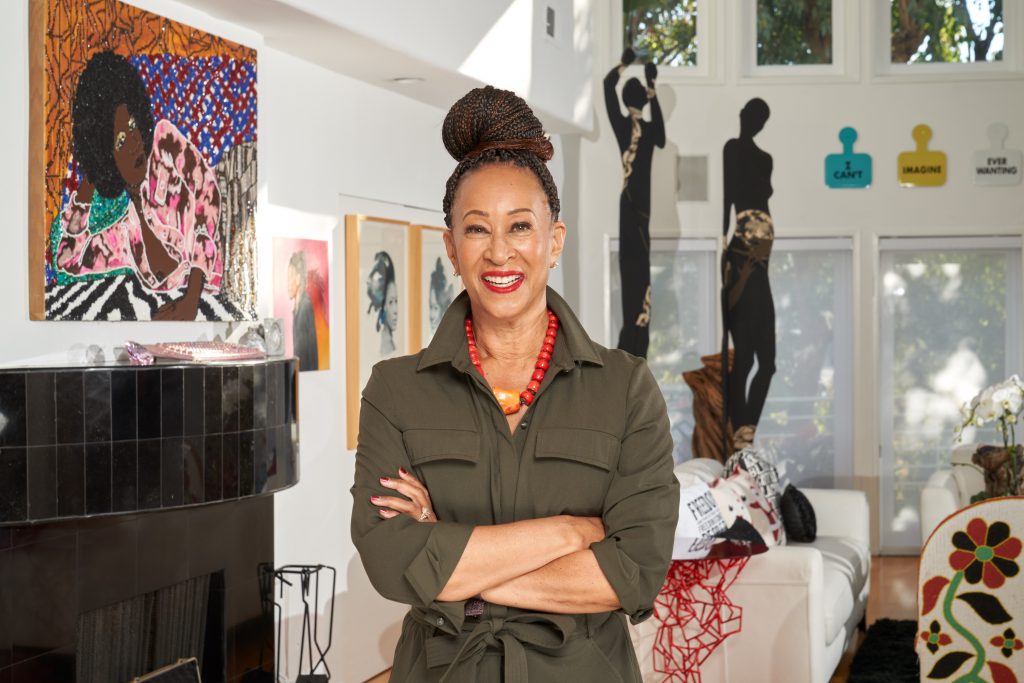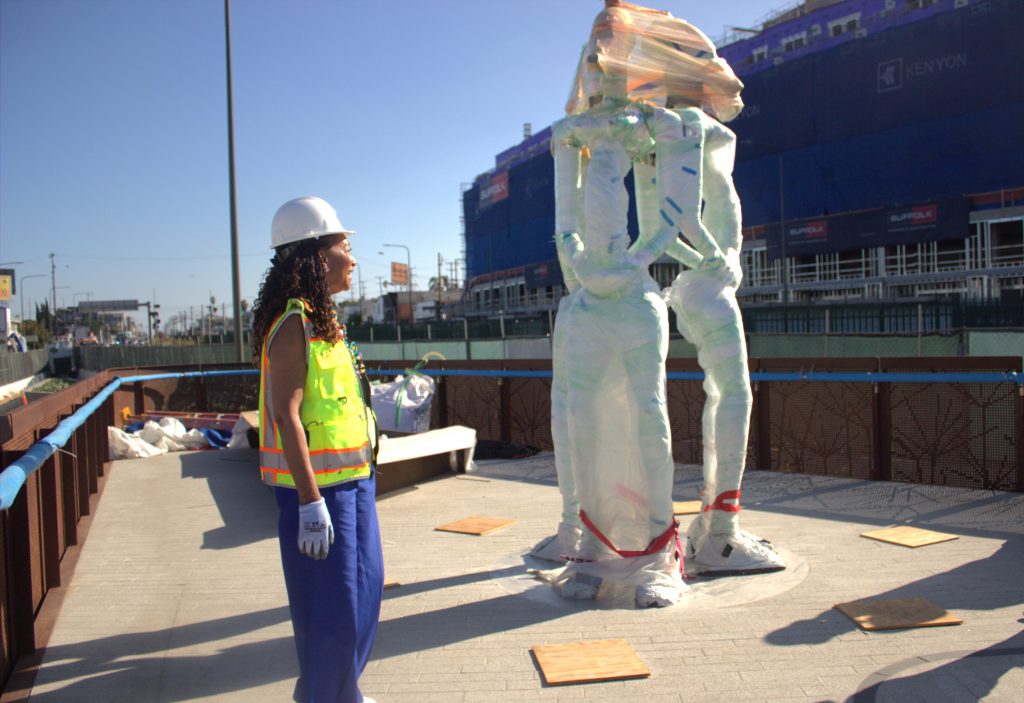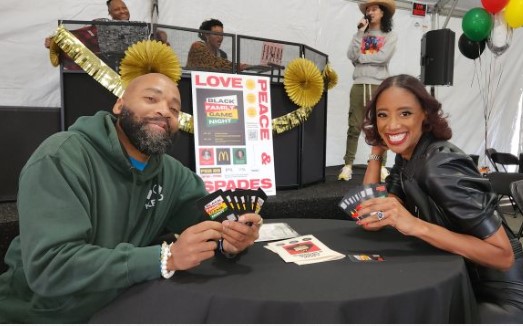
Los Angeles has been a quiet hub for Black art since the 1960s. With artists like Betye Saar, Melvin Edwards, and Noah Purifoy, creating community and exhibitions, Black art has become a staple in West Coast culture. Dr. Virginia Joy Simmons has diligently contributed to this movement and keeps Black stories alive through art collection and philanthropy.
In a recent interview with the Los Angeles Sentinel, Dr. Simmons discussed her journey in L.A. art, what she is most proud of, and how the city can continue to honor the rich legacy of Black expression.
For more than 30 years, Dr. Simmons practiced radiology at Kaiser Permanente. Her mother was a nurse at Kaiser Permanente Los Angeles Medical Center, and she decided to pursue a career in diagnostic imaging to make a difference in people’s lives. She has recently retired and is now focused on her leadership and support in the L.A. art community.
As a proud L.A. native and world traveler, Dr. Simmons has focused her efforts on artists of African descent and artists whose work is informed and inspired by Black culture. Recognizing the importance of sustaining a healthy arts ecosystem, she is known for mentoring the next generation of art collectors and maintaining networks that nurture creativity.
Related Links:
The Educational Influence of Dr. Pauline Merry
Meet Julia Smith – the New Executive Art Director of Range Projects
Artist Arthur Haywood Wins the Writers and Illustrator of the Future Award
Meet The Artist Dom of Human and Divine
Dr. Simmons recalls taking her first art class with Alonzo Davis at Crenshaw High. Her teacher instantly noticed that she had a good eye for art and encouraged her to become a collector. Dr. Simmons acquired her first piece in 1974, a print by Elizabeth Catlett at Gallery Tanner.
“My mentors made me aware of my opportunities and responsibilities to not only acquire the work, but by supporting young art spaces, being on boards, and being involved in other aspects of the art community so Black artists could get exposure in a boarder audience than what I could do as just a collector. Supporting those spaces financially and with my time is how I got into philanthropy and supporter of the arts.”

“I started traveling to New York in the 70s and it was like ok, this what I want to do. It took me a while to buy my first piece, which was back in Los Angeles when I was going to medical school. Once I bought my first piece it was on! Before that, I was collecting posters and prints. I knew I wanted my home to feel like joy, to feel like me. To have people be aware of the creativity of what Black people had to say artistically.”
In 2020, Dr. Simmons became Destination Crenshaw’s Senior Art Exhibition Advisor. The $100-million project is working with over 100 artists to create outdoor exhibits that will be displayed for 1.3 miles on Crenshaw Boulevard.
“It’s exciting to help mentor the next crop of young collectors, I think it’s important to support artists who are trying to make their livelihood. We’re in a time now where things that Black people have to say, and share is important. People are realizing that, and I think it’s going to become more important as forces are trying to silence it.”
“In the ’60s and ’70s, there was a lot of political art being made, and social justice and consciousness have always been a part of what artists do. I think it’s far more noticeable now with social media. Artists have been talking, writing, and painting about what’s going on around them, now with social media those ideas and concerns are getting a wider audience. The figuration and representation of art has made a resurgence, and more abstract work has become a part of the conversation. Black people have been doing this a long time.”
Governor Gavin Newsom appointed Dr. Simmons to the State Board of Directors at the California African American Museum (CAAM) in 2023. She has also served on the boards of the Santa Monica Museum of Art and Stanford University; lends works to major museums; and acts as a mentor for the next generation of collectors. Her extensive expertise and experience have been well received and respected.
When asked about her experience at CAAM, Dr. Simmons shared, “I remember when CAAM first opened in the ‘80s, it’s always been a part of my family’s life going to the museum and supporting that institution. California and Black folks west of the Mississippi need to understand that we do make art, we do have a voice, and we do have a community and culture that must be remembered and celebrated. There’s so much creative energy in Los Angeles.”

“I was a part of the foundational side of the board in the ‘90s, supporting the museum when it began to raise money and visibility. I cycled to other things, but I was appointed by the Governor to be on the board of directors, and it is still my passion to ensure the stories of African Americans are a part of the history and fabric of America. Our contributions have been historically, culturally, and visually important.”
Dr. Simmons is most proud of her family, “I have two daughters and now two grandchildren that I think have a level of consciousness that will impact the culture and the world. My friends and family are what I am most proud of.”
When considering the project and how to involve the community in a real way, Destination Crenshaw enlisted Dr. Simmons’ help with properly representing the area and what’s to come.
She shared her thoughts on the project, “I began very early when they were putting together the advisory committee, imagining what Crenshaw could look like. Having grown up in the Crenshaw area, I remember when it was a vibrant community and space with the car dealerships up and down the boulevard, with the lowriders, and Leimert Park. It was an exciting place to grow up. To come back to support this project and concept after living through so many events has been special.”
“When the space shuttle came down Crenshaw and took out all the trees, the neighborhood didn’t get the reinvestment that it needed and when Metro put the train above ground, it also took a lot from the community. When I was asked to be a part of the advisory committee, it was a no-brainer to think about what was needed to bring Crenshaw back alive. Using the arts to do that spoke to me, and because of my relationship with artists and the community, I became the Senior Art Exhibition Advisor,” Dr. Simmons explained.
“I think it was important to highlight having the best of the best. We want our community to see the best. If you go to Beverly Hills, there are trees and parks where people can sit and chill. You can walk for blocks and not have that along Crenshaw Boulevard, and that’s a shame. All the businesses that used to be there, we hope with Destination Crenshaw people will see this community and support it. The whole area gets revitalized and reenergized.”
Destination Crenshaw is expected to open to the public in 2025. Dr. Simmons wants the L.A. community to continue to support Black art and expression. Creative energy is not outside of ourselves but within us. She believes reflection and representation are the true keys to advancement.







